ホーム → 文法 → DoJG main menu → 基本 → Basic Page 118
Particle
| A particle which indicates the subject. |
| 【Related Expression: は1】 |
(ks). 雨が降っている・います。
Rain is falling.
(a). 私の部屋にはステレオがあります。
There is a stereo in my room.
(b). あ、のり子が走っている。
Oh, Noriko is running.
(c). A:このレストランは何が美味しいですか。B:ステーキが美味しいです。
A: What is good in this restaurant? B: Steak is good.
1. が marks the subject of a sentence when the information expressed by the subject is first introduced in a discourse. When the subject is presented as the topic (that is, the information has already been introduced into the discourse), however, the topic marker は replaces が. (⇨ は1) Consider the following discourse, a typical opening in folktales, which illustrates the different uses of が and は.
In the first sentence, おじいさん 'old man' appears for the first time in the discourse; おじいさん is the subject but not the topic in this sentence. Therefore, it is marked by が. The second sentence tells something about the old man introduced in the first sentence. おじいさん is now the topic; therefore, it is marked by は rather than が. Note the parallelism here between が and は in Japanese and 'a' and 'the' in English.
2. が is also replaced by は if the subject is in contrast with another element. For example, in Example (c), B could also say:
Here, ステーキ 'steak' is newly introduced in the discourse and is not the topic; yet it is marked by は. This is because ステーキ, in this case, is being contrasted with other food.
3. Since Interrogative words like 何 'what', 誰 'who' and どこ 'what place' can never be topics, they are never marked by は, as in (3).
4. The subject in subordinate clauses is marked by が unless it is a contrasted element, as seen in (4).
Note that topics are not presented in subordinate clauses.
3. In relative clauses, the subject may be marked by の, as in (5).
(⇨ Relative Clause, Note 3)
6. In some expressions, elements which are considered to be direct objects are presented as subjects and are marked by が.
(⇨ は~が)
7. To sum up the important rules concerning が,
【Related Expression】
The topic marker は is often mistaken for a subject marker. It appears to be a subject marker because it often replaces が.
(⇨ は1)